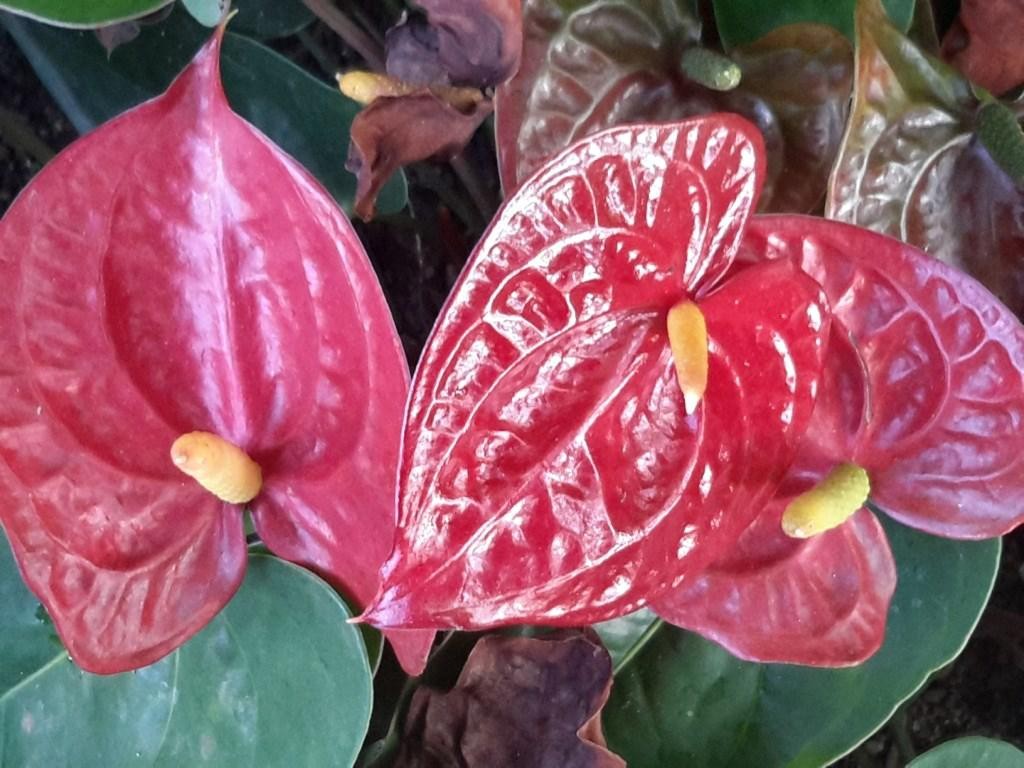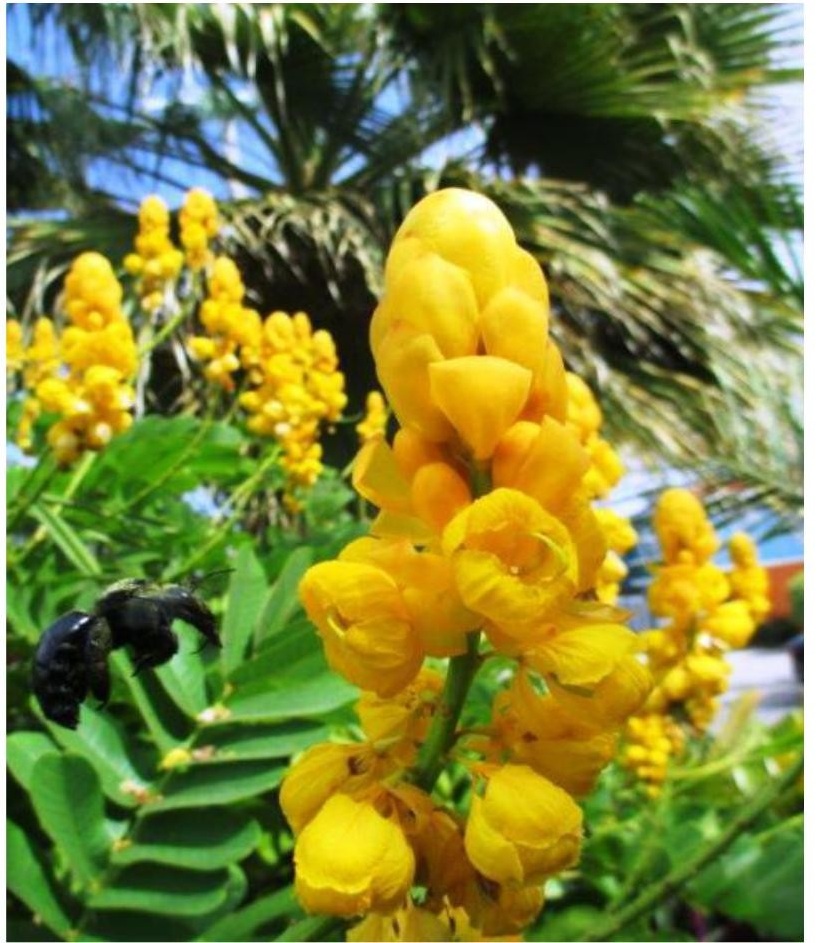By Tommy Clarkson from the August 2018 Edition
Anthurium andreanum
Family: Araceae
Also known as: Flamingo Flower, Boy Flower, Painted Tongue, Flamingo Lily, Palette Flower, Spathe Flower, Pa-tent Leather Flower or Tail Flower
Many think of the uniquely shaped Anthurium as a Hawaiian flower. Sorry, but the genus is not native to “The Aloha State”. They were first imported there, from London, in 1889, by Samuel Mills Damon, who was, at that time, the minister of finance for the Republic of Hawaii. (Oh, the multitude of mindless minutia one can glean from our writings!)
With somewhere approaching a thousand species in this unique plant genus, in the wild, these easily recognizable flowers range from Southern Mexico to northern Argentina and Uruguay. They can even flourish as an epiphyte (a non-parasitic plant that lives upon another plant often a tree, for instance). This, the red Anthurium andreanum, is native to the wet forests of the western slopes of the Andes in southern Colombia and northern Ecuador.
Those suffering with a severe affliction for the amassing of trivia might be interested to know that they were discovered in Colombia in 1876 by Edouard André those who are not so inclined can simply skip over those last twenty-five words!
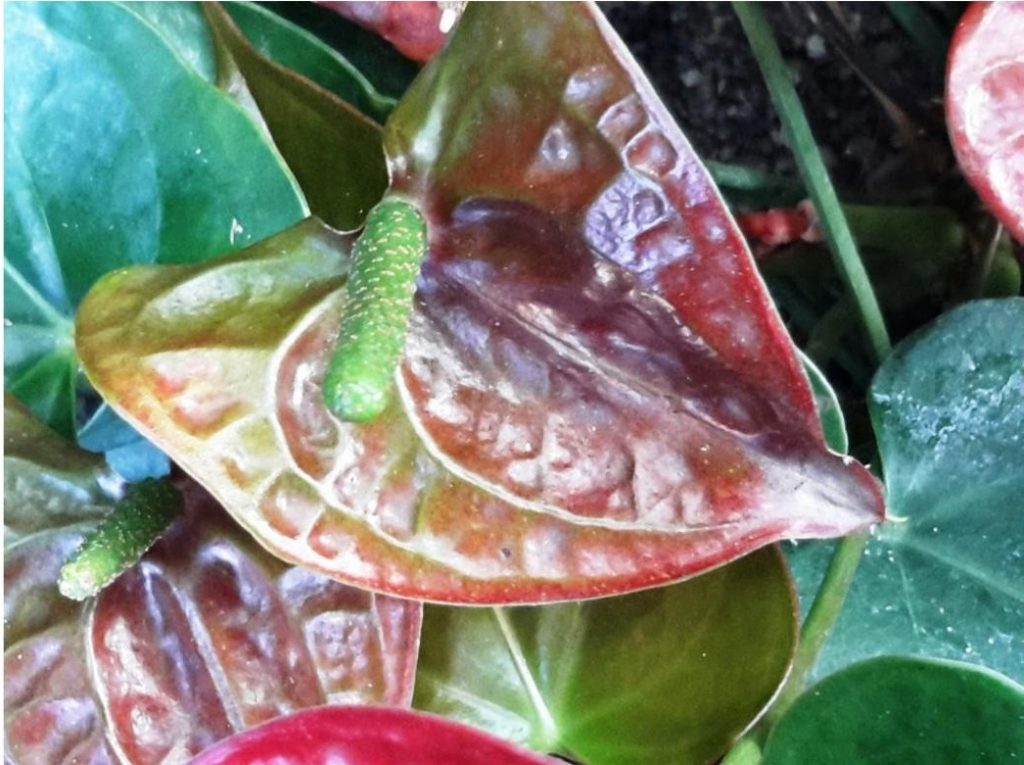
In the proper environs, it is rather easy to grow these striking,tropical plants year round. And, like some of the folks we’ve come across in our trek of life, there are all sorts: some that creep, others seeking to climb and those that simply spread out, taking up space! The middle kind Anthuriums, not people often naturally hangs from the jungle canopy, down to the floor of the rain forest.
The red, heart-shaped “flower” which we have all come to recognize and identify as an Anthurium, is actually a waxy, modified leaf (spathe) that flares out from the base of a fleshy spike (spadix) where the tiny, real flowers grow. The true flowers appear as that roughness a person feels running one’s finger up and down the spadix. The color changes of the spathe between the bud stage and anthesis, (when the flower expands) can vary from pale green to white, rose, orange, reddish purple, reddish brown to shiny red.
Hermaphrodites, these flowers are often divided sexually with a sterile band separating male from female flowers. (No, this is not gender apartheid in the plant world!) The spadix can be club-shaped, tapered, spiraled, and globe-shaped in colors of red, white, green, purple, pink, burgundy or a combination.
The stems are short-to-elongated, with a length between just under six inches to almost a foot (15-30 cm). At their ends, the actual, petiolate leaves (having a small stalk that attaches the leaf blade to the stem) may be spatulate, rounded or obtuse. These may be erect or spread in a rosette nearly forty inches(100 cm) long in the larger species. The upper surface of the leaf may be matte, dully or semiglossy and the leaf texture may range from leathery to “paperesque” and fragile.
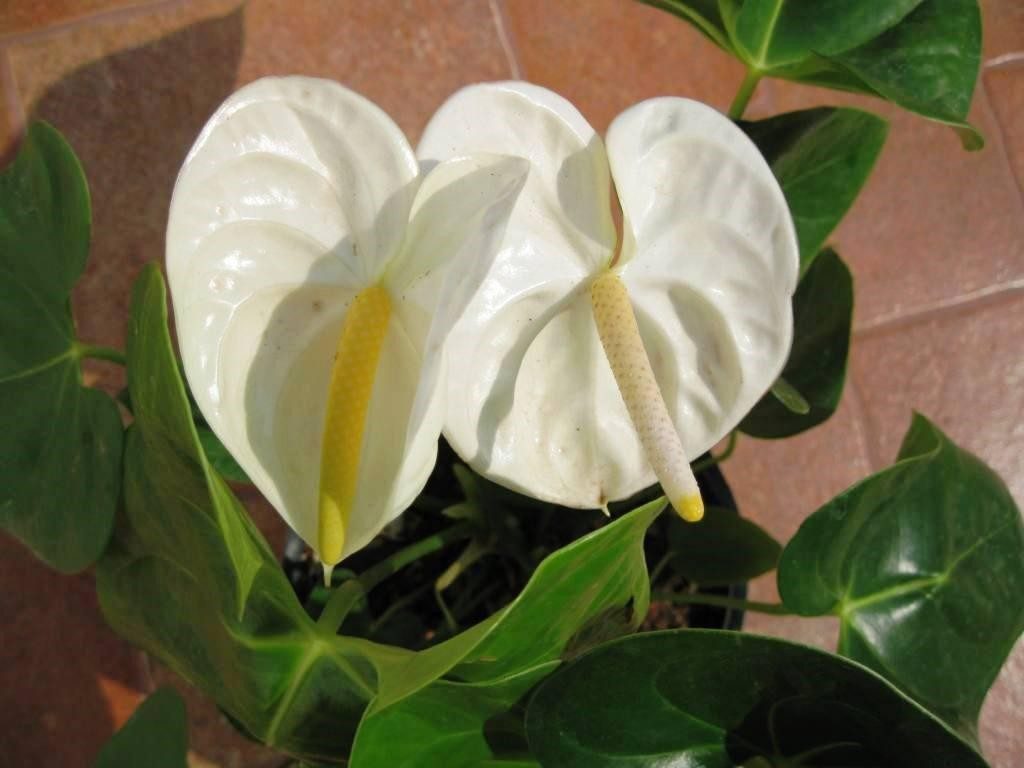
They possess a structure called a geniculum that allows the plant to swivel its leaves towards the sun, like the state flower of Kansas (from whence I originated), the sunflower! But, unlike that many petalled, bright flower of the plains, some non-terrestrial Anthuriums are hemiepiphytic (capable of beginning life as a seed and sending roots to the soil or beginning as a terrestrial plant that climbs a tree and then sends roots back to the soil.)
Anthuriums grow best with day temperatures of 78° to 90° F (28.56°-32.22° C) with temperatures above that causing foliar burning, reduced flower life and faded color. They will not survive frost or freezing conditions and night temperatures between 40° to 50° F (4.44°-10° C) can result in slow growth and yellowing of lower leaves.
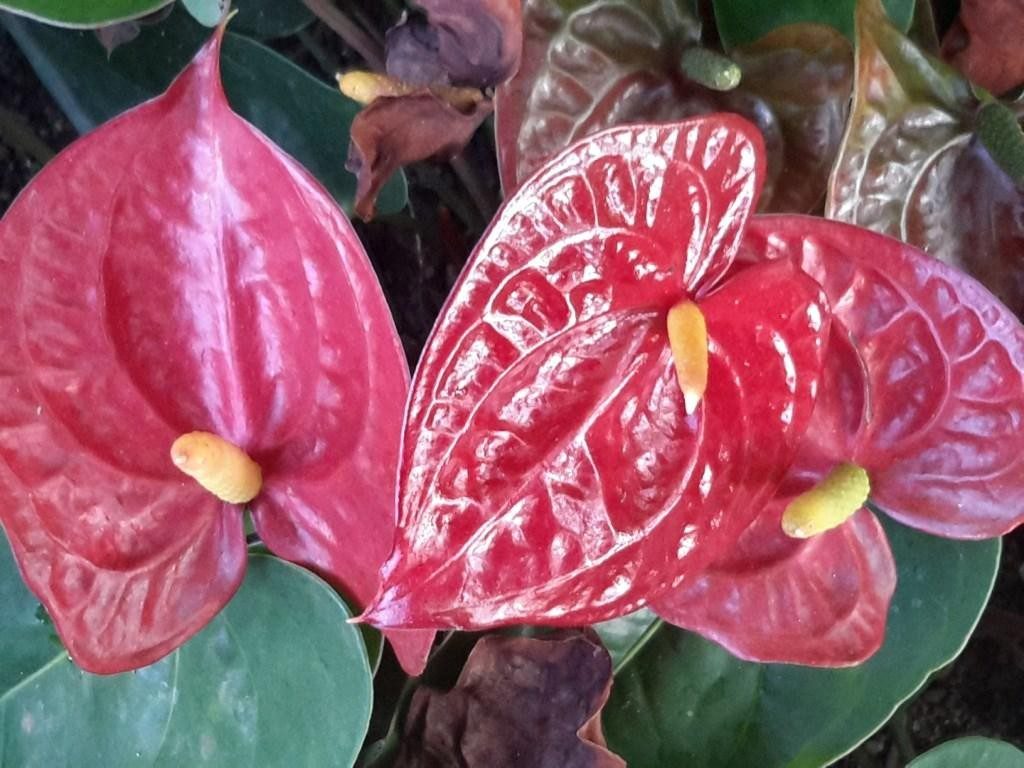
They like filtered, indirect light, warmth and high humidity. Those that are soil planted require a combination of sand and high organicmatter content, and a sustained degree of moisture (water thoroughly and then allow to dry a bit moist, but not drenched). Regular, slow release 3:1:2 fertilization, diluted up to onev quarter strength, is a good thing. Some Anthuriums grow aerial roots that will appreciate misting and thank you for pushing them back into the soil.
As concerns pests and diseases, one of the best ways to avoid the use of chemicals is by periodically wiping the foliage and gently spraying them with water. And just as you taught your small children when bathing, don’t forget their undersides!
Download the full edition or view it online
—
Tommy Clarkson is a bit of a renaissance man. He’s lived and worked in locales as disparate as the 1.2 square mile island of Kwajalein to war-torn Iraq, from aboard he and Patty’s boat berthed out of Sea Bright, NJ to Thailand, Germany, Hawaii and Viet Nam; He’s taught classes and courses on creative writing and mass communications from the elementary grades to graduate level; He’s spoken to a wide array of meetings, conferences and assemblages on topics as varied as Buddhism, strategic marketing and tropical plants; In the latter category he and Patty’s recently book, “The Civilized Jungle” – written for the lay gardener – has been heralded as “the best tropical plant book in the last ten years”; And, according to Trip Advisor, their spectacular tropical creation – Ola Brisa Gardens – is the “Number One Tour destination in Manzanillo”.
